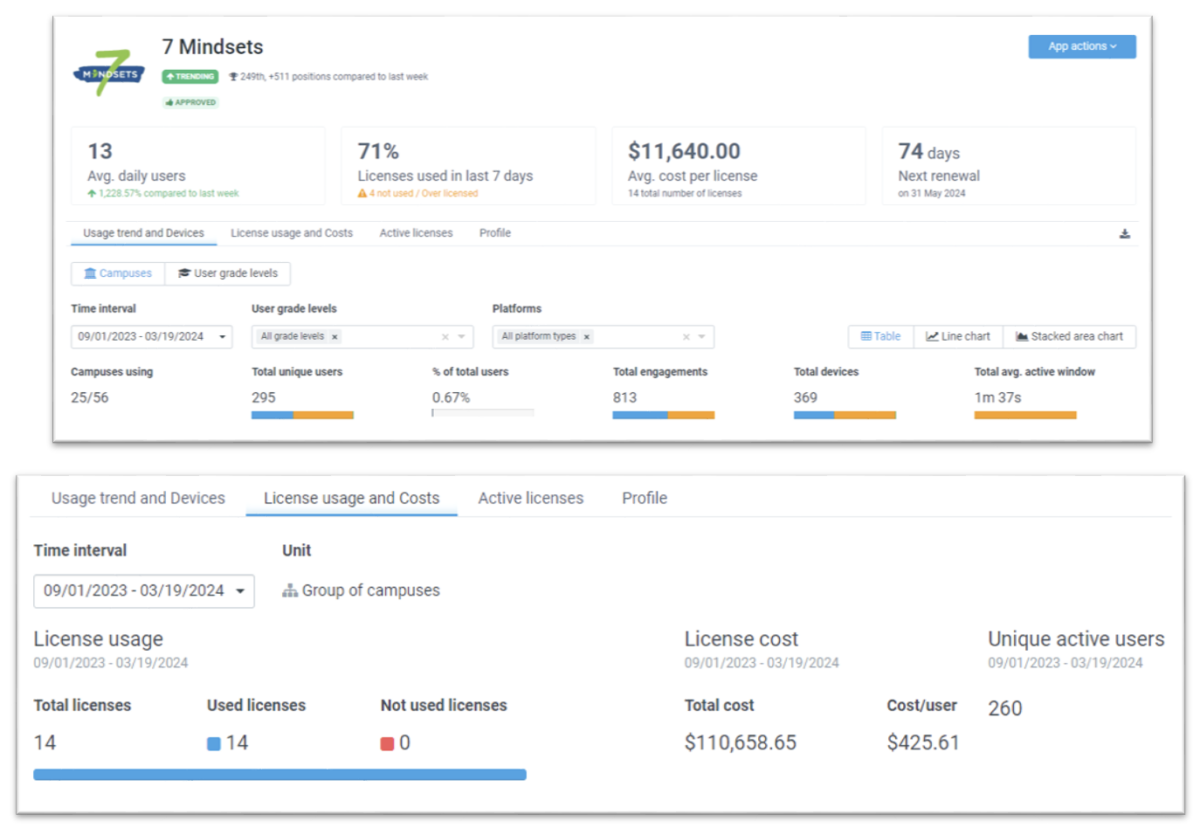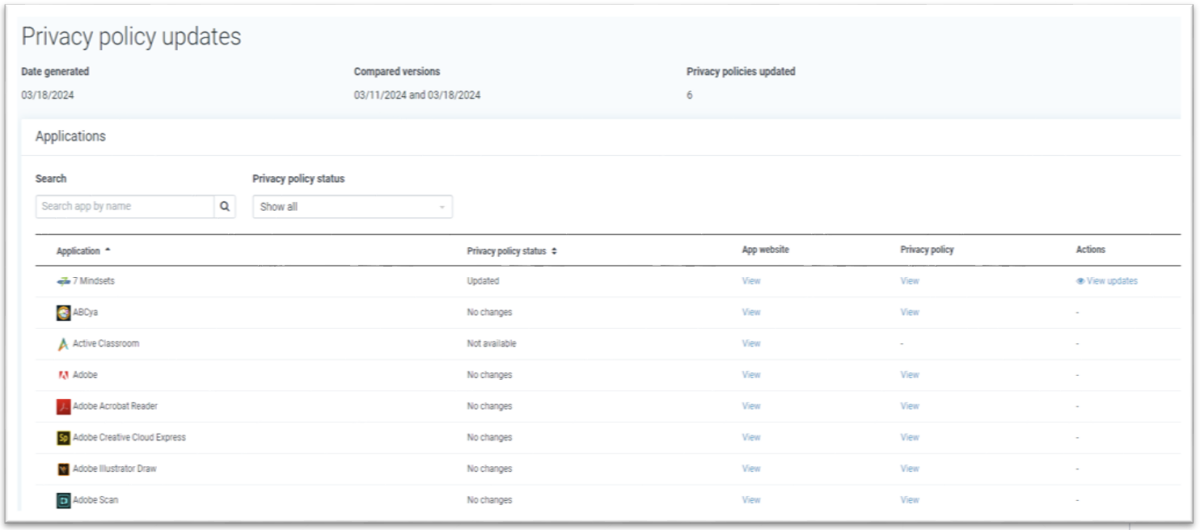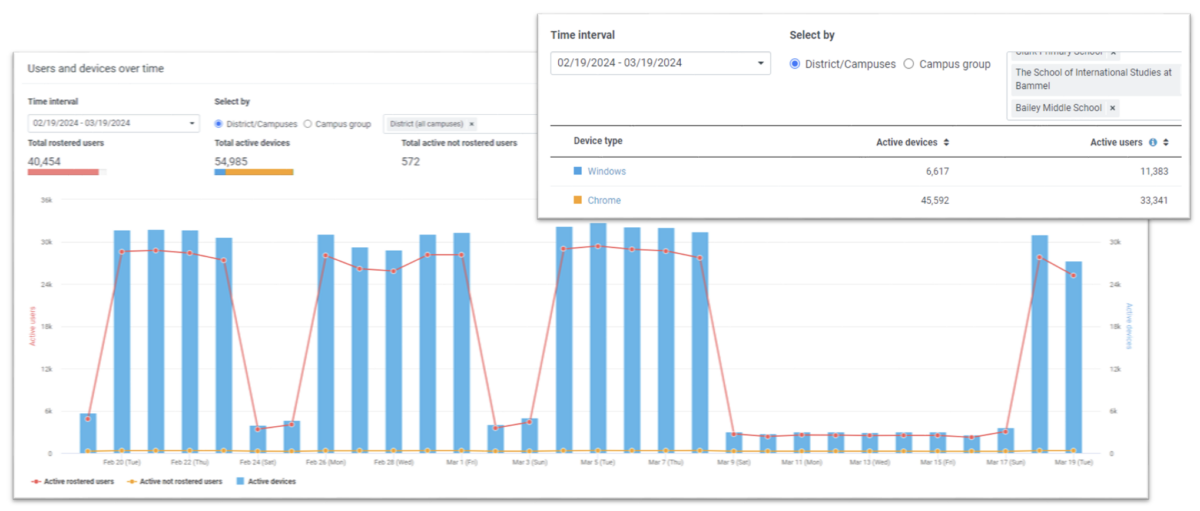Today’s digital classrooms are fueled by technology. In fact, as uncovered by Lightspeed Systems’ 2024 EdTech App Report, students and teachers at the average school district engage with over 2,000 individual applications in a year.
School districts invested ESSER funds for many of those apps, and as that funding now dries up, Information Technology teams and their peers are asking the following questions:
- What applications are of most value to enhance student learning outcomes?
- What applications are students engaging with, and are there differences across grade levels, buildings, and teachers?
- What applications are redundant?
- Which applications are in use that compromise data privacy?
- Which underutilized applications can be eliminated to save investment budget?
- What is the best way to ensure edtech investments are optimized?
At the recent Lightspeed Systems District Advisory Council meeting, Christy Hedrick, Director of Application Support Services at Spring Independent School District (Texas), spoke to how her team addresses those questions and more to not only maximize edtech return on investment (ROI), but also save time to devote to other priorities.
Making Visible What was Previously Invisible
In previous years, when Spring ISD’s Finance Department asked Hedrick to provide data on app engagement to identify applications that were not being used, she was unable to provide a confident response. For help, she turned to Lightspeed Digital Insight™, an edtech analytics product designed and developed specifically for the requirements of K-12 leaders.

Today, Hedrick now delivers engagement insights effortlessly. Lightspeed Digital Insight allows her team to see all the applications used by staff and students across the district, all in one place.
Spring ISD’s Curriculum and Federal Compliance Departments use this data to determine if purchased resources are actively being used and to assess the return on investment (ROI) for edtech spending. Additionally, the Federal Compliance Department uses the data to illustrate student engagement in and out of school for ESSER reporting purposes.
Lightspeed Digital Insight’s single view of app usage delivers ongoing insights to Hedrick’s team that they can action. For example, they identified a popular app, Google Translate, that was being utilized at an unusually high rate. When her team dug into the details of grade and student use, it was discovered that students were using this site as a proxy to bypass the school filter policies in addition to its intended purpose. To prevent this unauthorized use, Hedrick customized the district’s Lightspeed Filter™ solution to restrict the app’s usage to translations only.
With full transparency into edtech usage, many districts also use Lightspeed Digital Insight to identify redundant apps and determine which apps to cut based on usage. Districts can filter by the type of app—for example, English Language Arts—and compare usage.
Staying on Top of Privacy Policy Changes
Like many school districts, Hedrick and her Spring ISD team operate with a lean staffing model. At the same time, however, the team must remain diligent in its protection of student data privacy, a potentially time-consuming effort considering the number of changes to edtech app’s privacy policies.

Hedrick described Lightspeed Digital Insight as a “game-changer,” delivering a dashboard that alerts her team about every app policy update. All policy change information is in one place, and it’s easy to drill into any one edtech app to review specific details of exactly what changed about the policy and where, with before-and-after highlighted changes.
Improving Upon License Management
Privacy policy changes, while critically important, aren’t the only priority for school district IT teams. License management is critical to ensure a district gets value from its edtech investments.
With Lightspeed Digital Insight, Hedrick and her team are fully empowered to track purchased apps, cost per contract and individual license, license term dates, and, importantly, usage, all in a single location to save time.
Monitoring Device Usage
Measuring the impact of district-provided devices is important to optimize technology investments. Lightspeed Digital Insight provides Hedrick usage data for devices purchased and distributed by the district, giving them a clear understanding of device utilization across buildings, grades, and the entire district.

Summary
The Information Technology department of a school district plays a pivotal role in supporting a core mission of enhancing student learning outcomes, within a secure environment. As budgets decline, IT departments face heightened pressure to optimize spending, underscoring the need for visibility into usage and strategic investments in technology resources. Lightspeed Digital Insight provides the data necessary to understand the value of edtech investments and adjust capital and operational expenditures accordingly. Learn more about Lightspeed Digital Insight by requesting a demo today.

